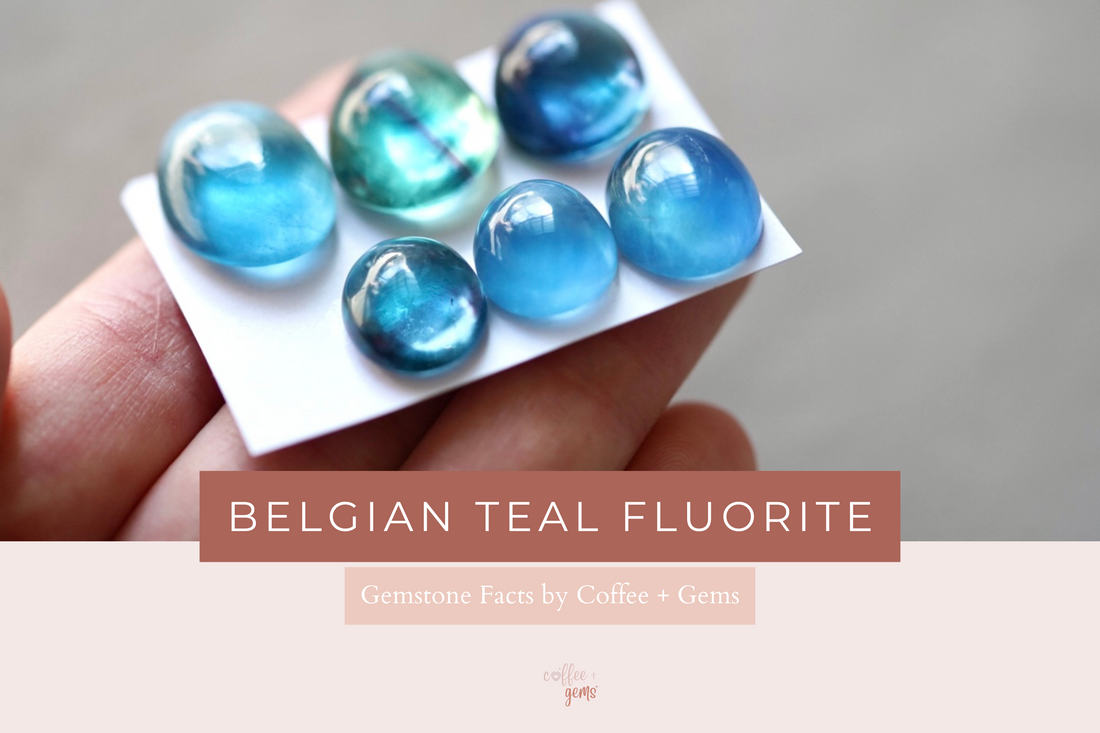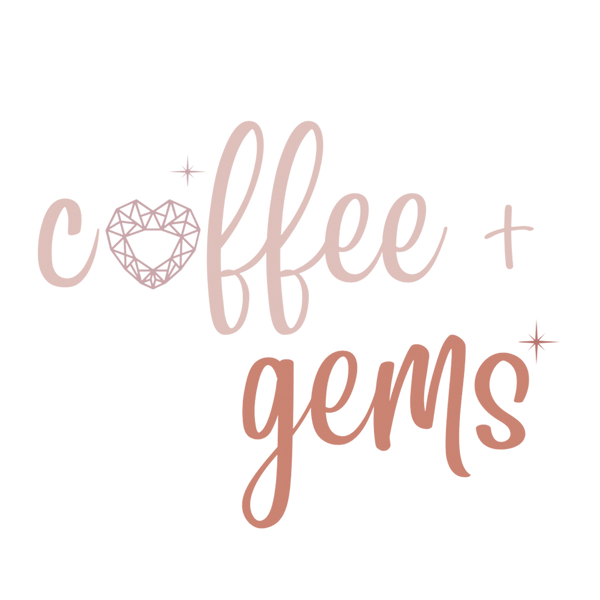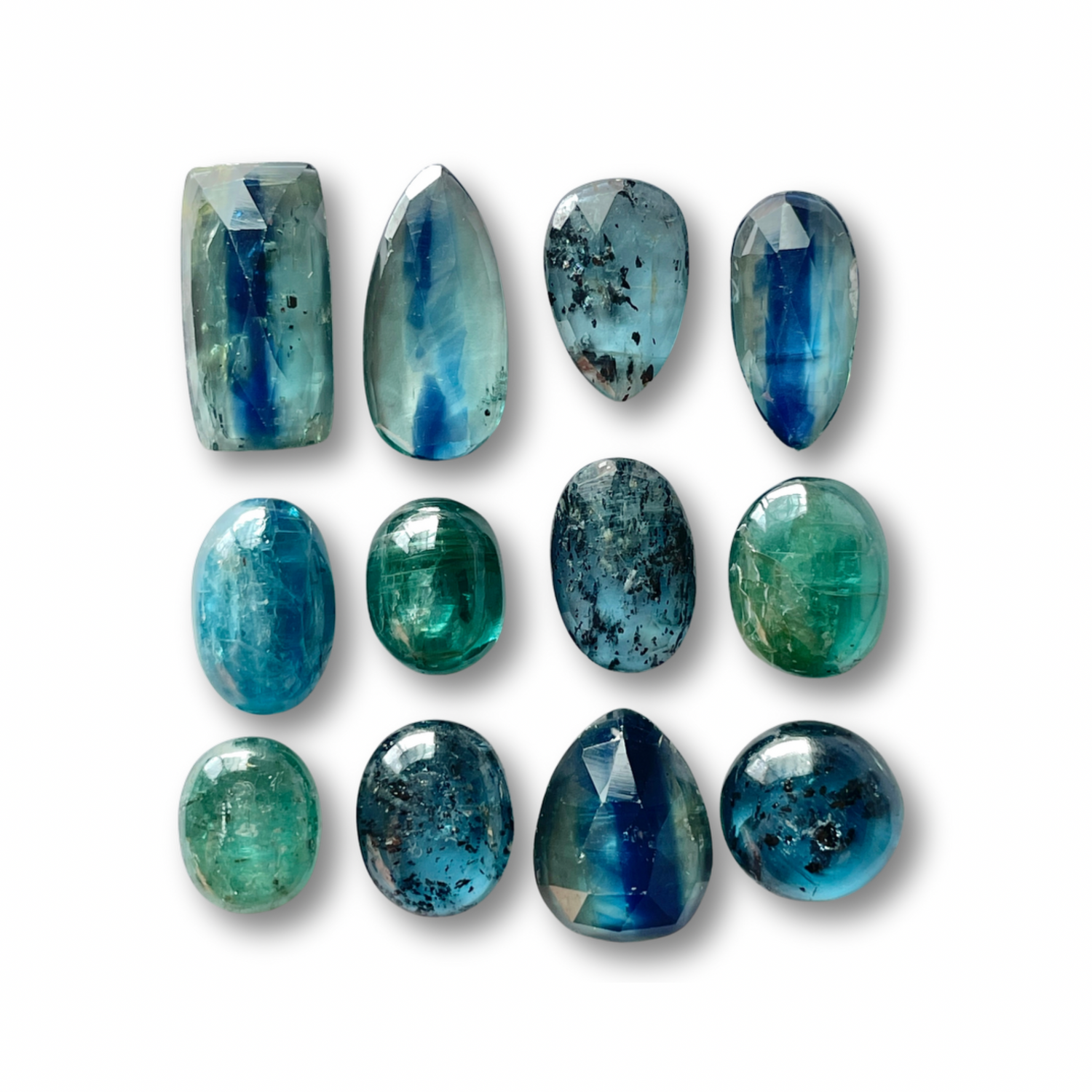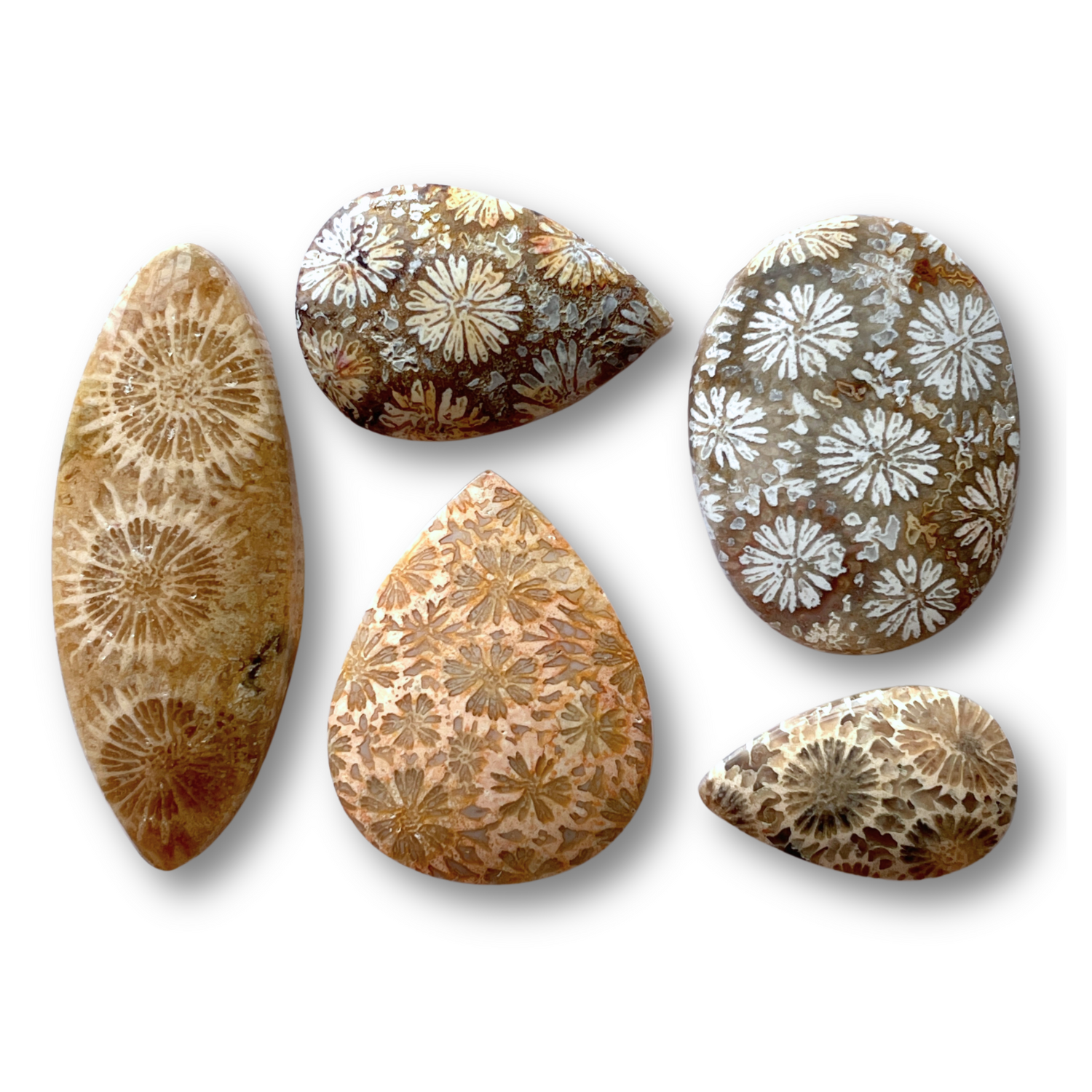
The Beauty of Belgian Teal Fluorite - Colour, Cut, Zoning & Patterns
Share

Belgian teal fluorite is quickly becoming a favourite among collectors and jewellery makers alike for its vibrant colouring, translucency, and exceptional visual depth.
In this blog post, we’ll explore where this mineral comes from, what makes it so unique, why high-domed cabochons are especially valuable, and how to tell the difference between a quality piece and a lower-grade one.
The Origin of Belgian Teal Fluorite
Belgian teal fluorite refers to a specific variety of fluorite known for its intense teal hues, which can range from ocean blue-greens to lagoon-like shades. This material is most often sourced from the limestone quarries and mineral-rich deposits of Belgium, where fluorite occurs naturally in pockets within sedimentary rock formations.
What sets Belgian teal fluorite apart is its unusual depth of colour and clean, often translucent to semi-transparent clarity—qualities not commonly found in fluorite sourced from other regions.

So... Where Does the Teal Colour Come From?
The striking teal hues seen in Belgian teal fluorite are the result of trace impurities within the crystal structure. Fluorite is naturally colourless in pure form. The teal shade arises when trace elements like iron, rare earth elements, or even hydrocarbons become trapped during the crystal’s formation.
These elements influence how the stone absorbs and reflects light, giving it that distinct blue-green tone. Many Belgian teal fluorites display subtle colour zoning (layers of deeper or lighter teal) which occur due to changes in mineral content as the crystal slowly grows over time.
The result? A mesmerising blend of green-blue tones with layered depth and movement that’s unlike anything else in the gem world!
What Makes Belgian Teal Fluorite So Special?
Fluorite, by nature, is a soft and brittle stone—but when found in the right conditions, it can be cut into stunning cabochons that showcase intricate internal patterns like colour zoning, banding, and phantom inclusions. Belgian teal fluorite in particular stands out for its:
• Uncommon Colour - True teal tones are rare in fluorite, making this variety instantly eye-catching.
• Clarity and Glow - The material often has a gentle, glowing translucency that looks almost illuminated from within.
• Natural Variations - Each stone is one-of-a-kind, with swirling bands or layered structures visible under light.
At Coffee + Gems, we source and cut only the most vibrant and structurally sound material into Belgian teal fluorite cabochons, with special attention to cuts that highlight the stone’s natural features. :-)

Why High-Domed Fluorite Cabochons Are More Valuable
Not all cabochons are created equal. In the case of fluorite, especially high-quality Belgian teal, high-domed cabochons are considered the premium cut. Here’s are a few reason why :
1. Visual Impact - the higher dome enhances both colour saturation and internal glow. It gives the stone a “lit-from-within” effect that flat cabochons can’t replicate.
2. More Material Used - A high dome requires more fluorite rough to begin with. This adds to both the cost and the value, as larger, clean rough pieces are harder to come by.
3. Light Play - The dome works like a magnifying lens, bringing subtle zoning, banding, or inclusions into sharper focus. It amplifies what’s naturally beautiful about the stone.
4. Rarity - Fluorite is notoriously delicate. Not all rough can handle a high-domed cut without fracturing. Cutting a clean, thick dome takes exceptional material and a skilled lapidary.
When you see a high-domed Belgian teal fluorite cabochon, you’re not just seeing a pretty stone—you’re looking at a cut that required care, experience, and quality rough to achieve.
How to Identify High-Grade vs. Low-Grade Belgian Teal Fluorite
When browsing Belgian teal fluorite cabochons, here’s what to look for to determine quality:
Colour: Rich, saturated teal hues with minimal discolouration (high grade) vs. Washed-out or uneven colour, often appearing pale or greyish (low grade).
Clarity: Semi-transparent to translucent with even light distribution (high grade) vs. Cloudy or overly included, reducing the glow and appeal (low grade).
Structure: Solid internal structure with minimal fractures or cleaving lines (high grade) vs. Fracture-prone, with visible cracks or chipping at the edges (low grade).
Cut and Dome Height: Smooth polish, symmetrical shape, and a well-proportioned high dome (high grade) vs. Flat top, poor symmetry, or uneven surface polish (low grade).

Belgian teal fluorite is a gemstone that ticks all the boxes: rare colour, inner glow, and a natural charm that feels both earthy and elegant. When cut into high-domed cabochons, its beauty is elevated to collector-grade levels - offering an irresistible blend of craftsmanship and nature.
Whether you’re searching for a premium high-domed piece that showcases glowing teal depths or a smaller, more affordable stone for everyday jewellery designs, we have you covered.
Each cabochon is carefully selected and quality-checked to ensure you’re receiving a stone that reflects the natural magic of Belgian teal fluorite.



